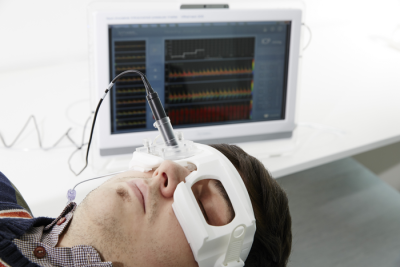
Unlike the usual intracranial pressure measuring procedure, which involves the drilling of a small-sized hole into the patient’s skull, invention by Arminas Ragauskas, D.Sc., Kaunas University of Technology, allows measuring brain pressure non-invasively through the eye using ultrasound. Image credit: EPO.
Glaucoma, one of the leading causes of blindness for people over the age of 60, is caused by optic nerve damage. Often, increased pressure inside the eye (called intraocular pressure or IOP) is detected in glaucoma patients. However, not all people with ocular hypertension develop glaucoma. Moreover, glaucoma can develop in cases of normal IOP. A so-called normal tension glaucoma (NTG) prevalence among patients in the global population ranges from 30 to 90 per cent according to different studies.
80 early-stage normal tension glaucoma (NTG) patients were enrolled in a recent study conducted by researchers from Lithuanian, Israeli and American universities. The subjects were selected from the 300 NTG patients referred to the Eye Clinic at the Lithuanian University of Health Sciences between January and October 2018.
The study revealed several statistically significant correlations between intracranial pressure, translaminar pressure difference (TPD, the difference between intracranial pressure and eye pressure), and visual field changes. The higher the TPD, the more significant damages to the patient’s visual field were registered. The most significant visual field losses occurred in the nasal zone.